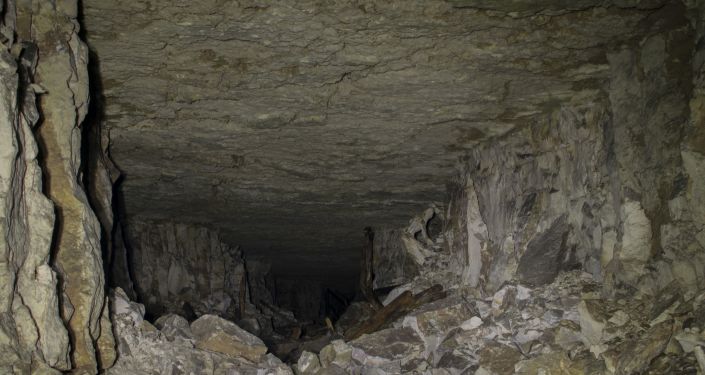Archaeologists find a ‘tomb’ of two thousand animals and humans in Saudi Arabia (photos)
2 min read
In northwest Saudi Arabia, a 7,000-year-old cave was discovered containing the bones of several animals and humans, which appear to have been deliberately moved to the site.
Archaeologists have discovered a 7000-year-old cave in Saudi Arabia that contains a large amount of bones, both animal and human, he is writing Friday (20) La Vanguardia newspaper.
Umm Jersan’s photo. A: West Pass entrance and adjacent areas. B: The entrance to the western corridor. Notice, at scale, the members of the research team on the right wall. A: The back room in which the excavations took place. D: Pull out the sampling box before collecting the surface and drilling. The location of the site is displayed in the center.
The bones belong to at least 14 different types of animals, including horses, camels, and rodents as well as humans, probably accumulated by many generations of striped hyenas, whose skeletons were also found in the cave, to me The study was published in the journal Archaeological and Anthropological Sciences.
AB: Boss upper molars (bovine). C: Right lower jaw of gazelle, comparable to gazelle-dorcas. D: Boss’s lower third premolar. E: The right jaw of a gazelle, similar to a Dorcas gazelle. F: Cape Damandable. G: striped hyena. H: jaw, goat. The first: the right jaw, the camel. J: Jaw, wolf. Left jaw K, striped hyena. 10 mm (AG) and 30 mm (HK)
The 1.5 kilometer long cave, called Umm Jarsan, is a lava tube system Under volcanic fields in Harat Khaybar, northwest Saudi Arabia.
“These animals are thirsty bone collectors, who transport them to dens for consumption, feeding of young animals, or storage”, He said Matthew Stewart, of the Max Planck Institute in Germany, and lead author of the study, posted on Twitter, referring to hyenas.
“Materials in Umm Jarsan have accumulated over the past seven thousand years due to the excellent conditions for preserving bones within the lava tube,” added.
Examples of bone erosion. A: Digestive erosion of small bones. B: Biting erosion of the teeth of horses. C – non-digestive acid erosion. D: A fragment of bone gnawed by carnivores and attacked by a bacterium. Scale bar = 10 mm
However, during a previous survey of the site in 2007, scientists heard a “roar,” indicating that Umm Jarsan is still a space used by the zabaleen.
Archaeologists think so Animals collected By hyenas because of the bite marks of these animals and because of the practice of hyenas to keep their prey away from the hunting place, something wolves do not know how to do. On the other hand, foxes cannot easily transport or consume such large prey.

“Entrepreneur. Music enthusiast. Lifelong communicator. General coffee aficionado. Internet scholar.”

:strip_icc()/s04.video.glbimg.com/x720/11792055.jpg)

:strip_icc()/s03.video.glbimg.com/x720/11786998.jpg)



